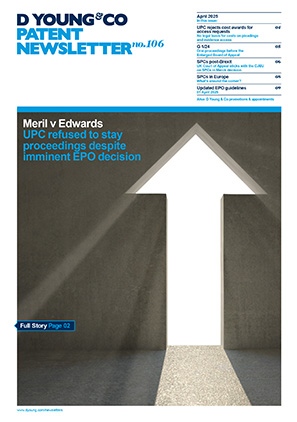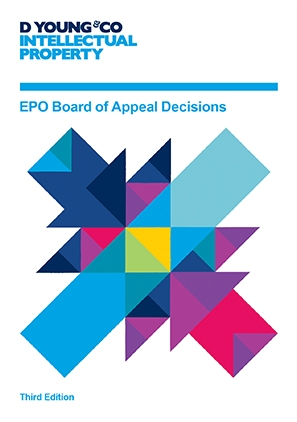Patent rights for satellites: computer simulations for satellite deployment & G1/19
Recently, SpaceX Inc, the space exploration company founded by Elon Musk, has performed a couple of its dedicated rideshare missions. A rideshare mission is where a transporter rocket carries a payload of multiple satellites which need deploying into orbit. By splitting the rocket’s payload capacity among multiple customers, the cost per customer of launching their satellite is significantly reduced. This is particularly beneficial to smaller companies which may have previously found getting their satellite into orbit prohibitively expensive.
On 24 January 2021, a new record was set. This first dedicated rideshare mission mounted 143 satellites onto one of its Falcon 9 rockets and deployed all of these satellites into orbit during an 18 minute period. This rideshare mission also deployed 10 Starlink satellites, which are the first to include communication lasers. These Starlink satellites will eventually enter a polar orbit to bring high speed internet to the polar regions. On 30 June 2021, the second rideshare mission deployed 85 satellites. As usual, this launch and deployment was streamed on SpaceX’s website.
Clearly, with such a large number of satellites, a huge amount of effort is required to mount all of these satellites into a single payload. However, with so many satellites being deployed in such a short period of time into various orbits, all happening whilst the Falcon 9 is travelling at around 23,000Km/h, it is necessary to perform careful planning of the deployment to avoid collisions.
Given the number of satellites being launched for mega-constellations (such as the Starlink, OneWeb and Kuiper projects) and the size of the launching rockets becoming larger (such as SpaceX’s Starship and Blue Origin’s New Glenn rocket) allowing much bigger payloads, this type of multi-satellite deployment will become more and more important in the future.
Patenting computer simulations
It is probable that these deployments are simulated using computer modelling to establish the viability of a particular deployment routine. Therefore, one question that arises is: can these computer simulations that allow these complex deployment routines be protected by patent?
G1/19
The Enlarged Board of Appeal at the EPO has issued a decision in G1/19 related to the patentability of computer simulations at the EPO. Whilst detailed commentary of this case is provided in our April 2021 patent newsletter
(see dycip.com/g119-computer-simulation), in this article we will investigate the interplay between computer simulations for satellite deployment and G1/19 and ultimately the viability of protecting such deployment simulations at the EPO.
Computer simulations and technical effect
For many years there was a question mark around the patentability of computer simulations at the EPO. The reason for this is because the EPO could not decide whether a computer simulation provided a technical effect. This is important because current EPO practice in the field of computer-implemented inventions is driven by the COMVIK case law which states that features that do not contribute to the technical character of the invention should be disregarded when determining the technical effect for the purposes of inventive step when using the established problem/solution approach.
Therefore, whether the computer simulation is technical or not is key to determining whether those features associated with the computer simulation should be considered when assessing inventive step.
One of the key questions addressed in G1/19 related to whether there needs to be a direct link with physical reality when determining technical effect. This was due to the divergent case law in this area. Specifically, in T489/14, it was found that “a technical effect requires …a direct link with physical reality, such as a change in or measurement of a physical entity.”. However, in T1227/05, it was found that numerical simulation of a noise-affected circuit was considered to be technical.
In the field of simulating satellite deployment, whether there needs to be a direct link with physical reality is important in determining the commercial value of such a patent. For example, if the simulation is performed on Earth (where jurisdiction is relatively easy to judge), but then requires a final step of “deploying a satellite” in orbit (where jurisdiction, according to the Outer Space Treaty, is based upon the country on whose registry the satellite resides) will increase the complexity of enforcement and will ultimately reduce the commercial value of the patent.
Does there need to be a “direct link” with physical reality?
There were many questions answered by the Enlarged Board of Appeal in this decision. However, for the purposes of computer simulations of satellite deployment, the Enlarged Board of Appeal confirmed that where the output of the simulation “form[s] the basis for a further technical use of the outcomes of the simulation (e.g. a use having an impact on physical reality)”, then a simulation invention may provide a technical contribution.
The Enlarged Board of Appeal confirmed that this output to control a real-world device need not be explicitly set out in the claim.
However, it is useful to note that the Enlarged Board of Appeal put a caveat on its confirmation. The Enlarged Board of Appeal noted that such simulations should be limited to uses having a technical purpose.
In other words, the Enlarged Board of Appeal made clear that if the results of the simulation have a variety of purposes then those results cannot contribute to an inventive step.
The rationale for this was because a technical effect needs to be produced over the whole scope of the claim.
Where the claim is not limited to any particular technical purpose, then over the whole scope of the claim, a non-technical purpose would also be covered which would produce no technical effect and so would not contribute to an inventive step.
This means that where the computer simulation is restricted to a computer simulation controlling satellite deployment, G1/19 indicates that the claim will provide a technical effect and so the simulation steps will be taken into account when considering inventive step under the COMVIK doctrine.
Importantly from a jurisdictional point of view, G1/19 has confirmed that a step of “deploying a satellite” is not required in order to provide this technical effect.
With the rapidly-evolving nature of space-tech related industries and an increasingly competitive global market place, it is becoming more and more important to know how to protect and enforcement of your orbiting assets.
This new space race will present many more legal challenges over the coming months and years, especially in the area of jurisdiction.


